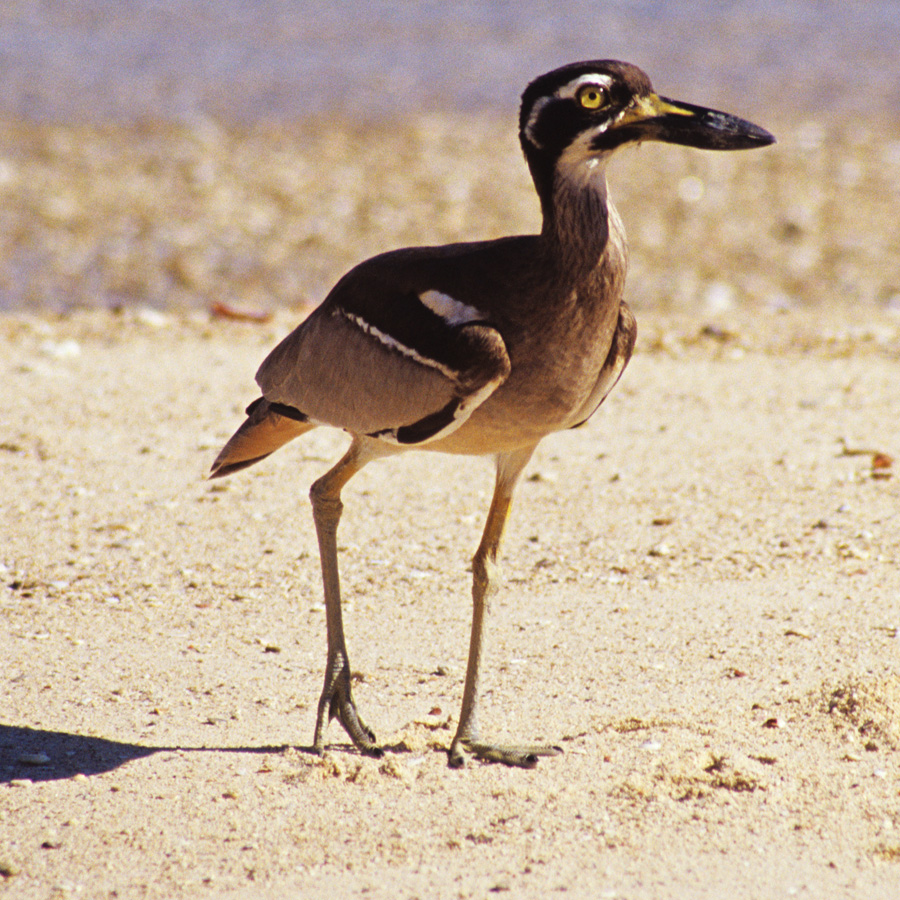Species and status overview
Beach stone-curlews are primarily found in intertidal areas, mangroves and rocky areas away from human habitation and are most commonly seen foraging at dawn and dusk. They utilise estuarine areas, offshore sandbars, islands and coral reefs for feeding, with their diet consisting primarily of crabs and other marine invertebrates
Living in isolated pairs that may be monogamous, the Beach stone-curlew nest above the high water mark adjacent to coastal areas. Their nest consists of a scratch in the ground that may be surrounded by a ring of twigs and leaves. This nesting habit makes them extremely vulnerable to predators including; cats, dogs and native predators such as eagles, raptors, corvids and ibis. Nests are also vulnerable to high tides and storm surges as well as impacts from coastal activities such as dune erosion and development.
Where have they been recorded in the area
- Offshore Islands
- Conway Beach
- Midge Point
- Cannonvale Beach
- Airlie Beach
- Hideaway Bay
- St Helens Beach
- Pioneer River Mouth
- McEwans Beach
- Blacks Beach
- Bucasia
- Victor Creek
- Cape Hillsborough
- Cape Palmerston
- Corio Bay
- Sandfly Creek
- Yeates Creek
- Eimeo
- Smalleys Beach, Haliday Bay
- Claireview
- Mentmore Beach
- Shoal Point
- Louisa Creek
- Kinchant Dam
- Ball Bay
- Town Beach
Description
Distinctly patterned, the Beach stone-curlew has bright white marks across it’s face and a large, unmistakably black bill with a yellow base and stocky body. It has large bright yellow eyes, grey-brown upper parts and a paler grey-brown breast and whitish belly. Large for a wader, they can weigh up to 1kg.
The beach stone-curlew has swollen-looking knees giving rise to its alternative common name, the Beach thick-knee. Interestingly, while these are located in the centre of the leg they are actually the equivalent of ankle joints.
Conservation concerns
Threats
- Human disturbance (such as beach combing, 4WD vehicles and boating) and coastal development are the primary threats to this species, they are found in low densities and occupy linear habitats, increasing the potential for local extinctions to become regional ones.
- Predation by cats and dogs are also thought to be a threat, especially during breeding season
- Nest destruction by feral pigs
What can I do?
- Avoid areas where Beach stone-curlews are known to occur, particularly during breeding season
- Keep dogs on a lead and cats inside at night
Photo credit Claire Barton
